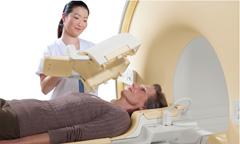
April 7, 2011 – The first digital broadband magnetic resonance imaging (MRI) scanner has been cleared in the United States. Previously available in Europe, Canada and Japan, the Philips Ingenia MRI system received 510(k) clearance from the U.S. Food and Drug Administration (FDA).
The system delivers exceptional image clarity, scanning efficiency and scalability. It is designed to advance diagnosis and radiology workflow.
Until now, MRI systems have utilized analog components for the signal acquisition and processing needed to generate patient images. However, the use of analog components during these processes has limited the upper reaches of image clarity and quality.
The system introduces digital signal acquisition and processing directly at the patient. By digitizing the signal directly in the radio-frequency (RF) receive coil nearest to the patient and transferring and processing it throughout the imaging chain, it is able to generate up to a 40 percent improvement in signal-to-noise ratio. This digital signal acquisition and processing facilitates the delivery of crisp image clarity to help clinicians make informed decisions for a wide range of clinical procedures, including traditional applications such as neuro, musculoskeletal, body and cardiac. The system’s digital capabilities also overcome the RF channel scalability limitations, giving hospitals the flexibility they need to stay on the clinical cutting edge without expensive hardware upgrades.
It also eliminates unnecessary exam preparation time and offers a more comfortable patient experience. With an integrated, hidden posterior coil, the 70 cm bore enables whole upper body imaging in just two stations and coverage for total body without manipulation of the patient or coil. As a result, clinics can see as much as a 30 percent increase in throughput compared to previous generation systems. The wide bore combined with the large field of view allows for a variety of procedures and the scanning of a variety of patients. It is available in 1.5T and 3.0T versions.
“Because of the digital RF architecture, the image quality and the improvements in patient workflow, I really feel that Ingenia is one of the best, if not the best 3.0T system available for neuro imaging,” said Suresh K. Mukherji, M.D., FACR, professor of radiology and chief of neuroradiology at the University of Michigan Health System. “Digital RF design and the dStream concept are clearly the future.”
For more information: www.philips.com


 July 25, 2024
July 25, 2024 








